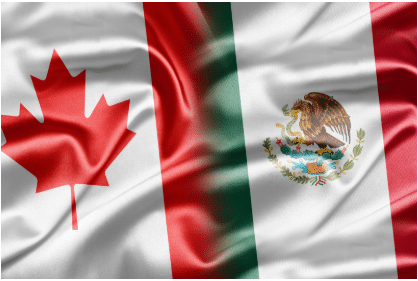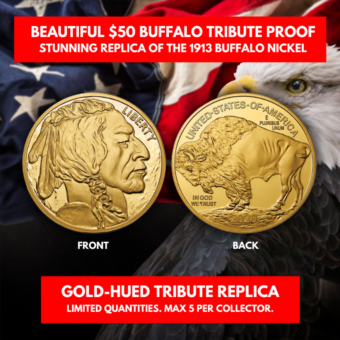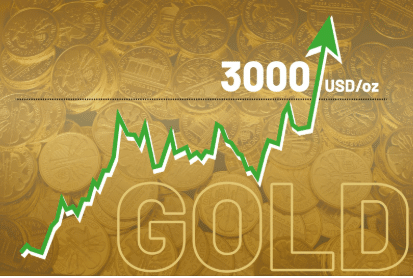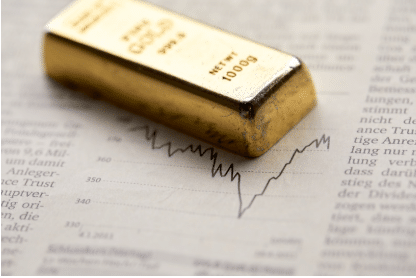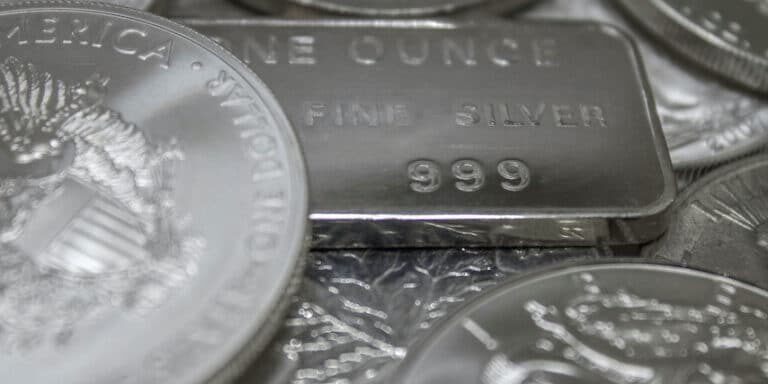
Silver Bars vs Coins: Which Is Better To Buy?
Silver has been the most popular and used form of money throughout history.
The great economist, Milton Friedman, described silver, and not gold, as the primary monetary metal in the world. Today, silver is believed to be just 8 times more abundant than gold and remains a finite and very rare precious metal. The quantity of above-ground, investment-grade silver, is only slightly more than that of gold bullion held by governments and banks.
Due to banks and central bank’s desire to move to purely fiat currencies and due to silver’s limited supply and high price, the use of silver as mass-circulation coinage was abandoned 40 years ago. In effect, silver went from being used as a currency and money to being used as an investment and store of value and in industrial use.
Today, silver bullion bars and coins are still widely minted all over the world to meet its increasing demand as a tangible asset and critical industrial and technological component. With demand expected to outstrip supply in the coming years, pure silver bars offer potentially attractive returns for investors.
Therefore, when you buy real silver bars or bullion coins, you are essentially making the same prudent choices that Emperors, legendary kings, and prosperous merchants have made throughout history. By allocating a portion of your savings to silver bars is investing in a rare precious metal which is a store of value with substantial and ongoing global demand.
How Silver Bars Are Made
Most silver you see as jewelry or coins begins life as a silver ingot or bar refined from silver deposits found in mines underground. A little-known fact about silver is that there are very few pure silver mines worldwide. Most silver is produced as a by-product of gold, lead, and other base metal mining.
Due to its relatively lower value, silver bars are cast more widely than gold bullion by both private and sovereign mints. The two most precious metals are refined through a similar process, with the most common forms being poured bars (or cast bars), and minted (or pressed bars). Silver mines extract the ore and refine it into pure metal through smelting. The molten metal is ultimately poured or cast into a mold to produce silver ingots or cast bars.
The word ingot is an old term used to refer to metals and other elements that are melted and poured into a mold with a specific shape, usually a rectangular block. Ingots are simply a convenient form of producing metals or nonmetals in a refinery into a form that is suitable for transportation and storage. Ingots are labeled with basic information such as weight and the name of the producer and are not meant to be traded as investment-grade metal.
Cast and pressed bars differ in several ways, and both have unique advantages to suit the preferences of every investor. As a new investor in silver bars, you might wonder:
How do cast silver bars differ from minted silver bars?
Which type of bar is the most suitable for investment?
What types of bars offer lower premiums?
Which bars are easy to sell at the best possible price?
Firstly, what’s the difference between poured bars and minted bars?
Poured Or Cast Bars
These types of silver bars are made by pouring molten silver into a mold, or cast, with the desired shape. Once the molten silver cools and solidifies, it is removed from the mold and weighed to ensure it contains the exact amount of silver. The cast bar is then stamped with the name of the refiner, its purity, and its gross weight. Alternatively, a serial number may be stamped on the bar for identification and authentication purposes.
Cast silver bars do not have as polished and shiny a finish as that of minted bars. Instead, they have a rougher, matte finish, and just like two muffins, no two poured bars are identical.
The process of making cast silver bars is relatively simple but can be costly when producing numerous small bars. This is because it involves a tremendous amount of energy to melt the silver, and a lot of labor to painstakingly pour molten silver into each mold.
Pouring bars is only cost-efficient when casting large bars of more than 100 ounces. Large bars, like the 1000-ounce bars traded by governments and banks and investment funds, are almost always made through the casting method. For smaller bars of less than 100 ounces, the pressing or minting method is commonly used.
Minted Or Pressed Bars
The process of minting silver bars does not involve heating the metal past its melting temperature. Rather, it begins with silver blanks. Large pieces of silver are shaped as bars or rounds without any markings. A pressing or stamping machine is then used to apply large amounts of pressure to the blanks using a die containing the desired design. The die typically has intricate logos or elaborate designs and creates an attractive and glossy finish.
Smaller minted bars can be produced quickly and cheaply using this process because it does not require lots of labor or energy to heat the silver. However, large bars of more than 100 ounces cannot be produced via this process.
The choice between cast or minted bars will, therefore, depend on the preference of the investor as well as the cost differences between minting and casting of the silver bars. Generally, bars larger than 100 ounces will be cast bars while smaller bars will be pressed bars.
Silver bars can also be made by heating the metal to soften it, before forcing it through a circular or rectangular space to produce an evenly shaped length of silver, which is then cut into smaller sizes and before stamping. This is known as extruded silver.
How To Determine The Purity Of Silver
Over the 4000-year history of silver, refiners have used varying methods to improve the purity of silver and therefore its quality. Today, advanced technology can produce silver with a purity of 99.99%.
The fineness of silver is denoted using the millesimal system, where 99.9% of silver represents 999 parts for every 1000 parts or 999 fineness. Sterling silver, the highest purity in silver jewelry, consists of 92.5% silver and 7.5% copper, is denoted as 925 fineness.
The karat system used for gold, where 99% purity represents 24 parts out of 24 karats, was previously applied to silver. Today, silver bars or coins are stamped only with the millesimal denotation, with the karat system remaining optional.
Bullion silver bars and coins have one thing in common - they are made from pure silver with at least 999 fineness. Also known as investment-grade silver, bars and coins are vastly different from silver jewelry and other collectibles.
Silver, just like gold, must be 99.9 percent pure or .999, sometimes referred to as “three nines fine” to be considered as investment grade. Silver bars of such high purity will be accepted as a financial asset by leading exchanges and can be traded as an investment by governments, banks, and individual investors alike. Investment-grade silver, therefore, only derives its value from the weight and purity of its silver content. This is unlike silver collectibles including numismatic coins, which may not be 999 silver, and whose value derives more from their historic significance and rarity, rather than their silver content.
To be used in jewelry or as mass-circulation coinage, silver must be alloyed with a different metal to strengthen and make it more resistant to scratches and other damage. Copper is usually employed for this purpose because it does not tarnish nor alter the color of silver.
Because silver jewelry is alloyed to other metals, its value is based mainly on the craftsmanship employed and not its silver content. It, therefore, does not offer much in terms of investment value.
How To Measure The Weight Of Silver Bars
The weight of bullion silver, like that of every other precious metal, is measured in troy ounces as opposed to regular ounces. The regular ounce, known as the avoirdupois ounce, is equivalent to 28.35 grams and is used in commerce to measure every item including common goods like sugar and salt.
Since the 16th century, the troy ounce has been the official measure of precious metals such as silver, physical gold, platinum, and palladium. It is heavier than the regular ounce and measures 31.07 grams.
The most common type of investment-grade silver is the London Good Delivery silver bar. This is the type of bar traded by large institutional investors and governments and weights1000 ounces and 999 fineness. The price of a Good Delivery bar is what determines the silver spot price you see quoted internationally.
For a silver bar to be labeled as Good Delivery, it must be minted from a refinery recognized by the London Bullion Market Association and remain in the custody of a secured vault approved by the LBMA. Once the bar is taken out of secure storage, it loses its Good Delivery status. Just like the gold version, good delivery silver bars fetch the best prices of any silver bars.
Some popular forms of silver investment such as silver ETFs, and digital silver, deals with Good Delivery silver bars and not any other form. Furthermore, most silver is originally bought as good delivery bars, before being transformed into the silver products or jewelry we buy today.
Popular silver bars are manufactured by recognized private and sovereign mints which include: Perth Mint, MKS Pamp, Johnson Matthey, Royal Canadian Mint, Asahi, Mitsui, Engelhard, Argos Heraeus, Valcambi, Umicor, and Metalor.
Types Of Silver Bars
Silver bars, just like coins, are a great option for every type of investor. Although most people associate silver bars with government or bank stockpiles, individual investors can also conveniently buy bullion bars and benefit from the investment advantages that they offer.
Silver bars come in different sizes, from the smaller 5g, 10g, and 20g bars and up to 1000-ounce bars. Furthermore, cast bars have a deeper profile than stamped bars and appear thicker and shorter in length and width.
The most popular silver bars are the large silver bars as they are the best value for investors and more liquid than smaller bars. Smaller investors tend to favor silver coins (1 oz) rather than small silver bars. Other silver bars which can be bought are:
One-ounce bars: These are the size of a biscuit. A 1-ounce Scottsdale silver bar for example measures about 50mm by 29mm by 2.6mm and contains 31.07 grams of silver.
Ten-ounce bar: These bars contain 310.7 grams of pure silver and are about the length of a pen across their diagonal. Such a bar typically measures 73mm x 41mm x 11.4mm.
One-kilo bar: With 1,000 grams of silver, a one-kilo bar is about the size of a brick. A PAMP bar is approximately 52 x 118 x 17mm in size.
100-ounce bar: This silver bar contains 3.107kg of pure silver. They measure about 184 by 80mm by 20mm and are one of the most popular silver bars.
1,000-ounce bar: Also known as a Good Delivery bar, this is a bar containing 31.07kg of silver and is 6 inches long, 2 inches wide and a quarter-inch thick.
Benefits Of Silver Bars Over Coins
Silver bullion bars and coins as physical precious metals both offer exposure to the silver market, and an opportunity to hedge against risk while profiting from price appreciations. However, for every investor, the choice between bars or coins will depend on several factors that include:
- The amount of capital you wish to invest in the silver market.
- How fast you want to build your silver investment portfolio.
- The need to sell your silver quickly in times of crisis.
- A desire to avoid paying high premiums on your purchase.
- The need for cost-efficient storage.
- Based on the above factors, investing in silver bars rather than bullion coins at a melt value will have the following advantages.
1. Silver bars can be bought at a lower premium than bullion coins since it takes more time and painstaking labor to strike metal content coins into their ornate shapes and designs.
2. An investor seeking to build up their investment portfolio quickly will find silver bars more suitable since they cost less per ounce than coins.
3. Bars take up less storage space than coins of similar value and will, therefore, cost less to store in an insured and high-security vault.
Silver coins were the earliest form of mass-circulation coinage in the world. This was for the simple reason that traders trusted the intrinsic value of silver in exchange for their hard-earned property. The highly popular drachma in ancient Greece or the Roman denarii were treasured as prestigious coins and measures of wealth. These coins are still highly sought after today as valuable collectibles due to their rarity and historical significance.
In recent history, mass-circulated coins were made from silver alloys as a guarantee of value and to ensure acceptance. The Spanish Empire, the British Empire, and subsequent governments minted silver coins to give traders a portable, finite, and universally accepted form of currency to drive commerce in far-flung corners of the earth.
Today, governments, banks, and institutional funds invest in silver as a hedge against currency devaluation and general uncertainty. Silver bullion coins such as American Silver Eagles, Austrian Silver Philharmonics, and Canadian Maple Leaf offer real portfolio diversification and potentially lucrative returns on investment.
For an investor looking to enter the silver market, what exactly are investment-grade silver coins, and which type of coins offer the best investment choices? Silver coins are available in four main formats.
Silver Bullion Coins
These are flat, disc-shaped coins containing 99.99% pure silver which are struck by sovereign mints such as the US Mint, The British Royal Mint, and Canadian Royal Mint among many others. Bullion silver coins usually have a date and face value which confers legal tender status in their country of origin. The weight and purity of silver in bullion coins are also guaranteed by law, which makes them a smart option for new investors.
Silver Rounds
Silver rounds are circular disc-shaped bullion coins made from 99.99% pure silver. They are commonly produced as replicas of popular sovereign coins and carry a logo with the weight and fineness stamped on them. Silver rounds are priced closer to wholesale bullion prices due to their availability and lack of official status. They look very similar to sovereign marked coins.
90% & 40% Silver Bags
The term junk silver is a misnomer, considering that the so-called junk silver bags or junk silver coins are anything but junk. Before 1965, most coins in circulation were made from 90% silver, although others had a silver content as low as 40%. These coins were the regular dimes, quarters, and half dollars issued by the US Mint as government mints before 1965.
Numismatic and Semi-Numismatic Silver Coins
These are silver coins with a collectible value derived mainly from their rarity, beauty, and historical or commemorative significance. The value of a numismatic or semi-numismatic coin has little connection with the silver spot price and is usually much costlier than the silver they contain. For example, a single 1658 Cromwell Shilling can fetch more than $5000 due to its rarity and historical significance.
What Storage Options Do You Have When It Comes To Silver Bars?
Once you buy silver, you must consider storage options that provide the best security, quick access, liquidity, market updates, and potential tax advantages at the lowest premium. As such, silver bullion bars should be stored in a high security bonded warehouse, which allows you to store silver free of tax. This is known as bonded silver. It remains tax-exempt unless withdrawn from the warehouse.
By not paying tax on silver bars as legal tender, bonded warehouses in safe jurisdictions such as Switzerland, Singapore, or Hong Kong Provide the safest and most secure storage while allowing your precious metal portfolio to grow without the burden of a tax from the IRS.




